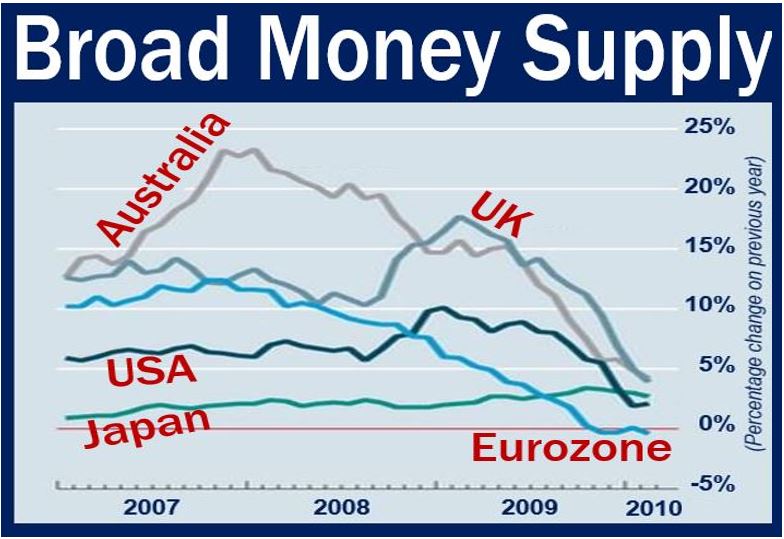Broad money – definition and meaning
Broad money is a measure of a country’s money supply. The term, which usually refers to M3, includes more than simply banknotes and coins. In other words, it means more than ‘narrow money.’ It is the most inclusive definition of the money supply. The term also includes bank money and any cash held in easily accessible accounts. Bank money refers to demand deposits at commercial banks.
Broad money consists very liquid items. It also includes the non-cash items that we can convert into cash rapidly.
There is no unique ‘correct’ measure of a country’s money supply. Economists have several measures which they classify. Their classification runs along a spectrum between narrow and broad monetary aggregates. In other words, the money supply is not black and white, but rather different shades of gray.

Narrow money supply refers to the most liquid assets, cash, and checkable deposits. Broader money, on the other hand, includes less liquid types of assets, such as certificates of deposit. ‘Narrow money’ means the same as the ‘narrow money supply.’
Monetary-policy actions generally affect and control narrow money more than broader measures.
Broad money usually means M3
Broad money, which is a term we use loosely, generally means the same as M3.
M3 includes coins and currency, deposits in checking and savings accounts, small time deposits, non-institutional money market accounts. It also includes overnight repos at commercial banks. Repos are a form of short-term borrowing.
M3 is the main measure of the money supply. In fact, it is the economic indicator we use to determine an economy’s liquidity.
However, broad money can have different meanings. The meanings vary depending on the context in which we use the term. In most cases, it means the same as M3. However, we might also use it when referring to just to the least liquid forms of money.
Authors define broad money at the beginning of many academic papers because of its ambiguous meaning.
According to the Bank of England, in the UK, broad money refers to the M4 money supply.
The OECD (Organization for Economic Cooperation and Development) says the following:
“Broad money supply, in addition to currency in circulation plus sight deposits held by domestic non-banks, also include time deposits as well as savings deposits at short-notice held by domestic non-banks.”

